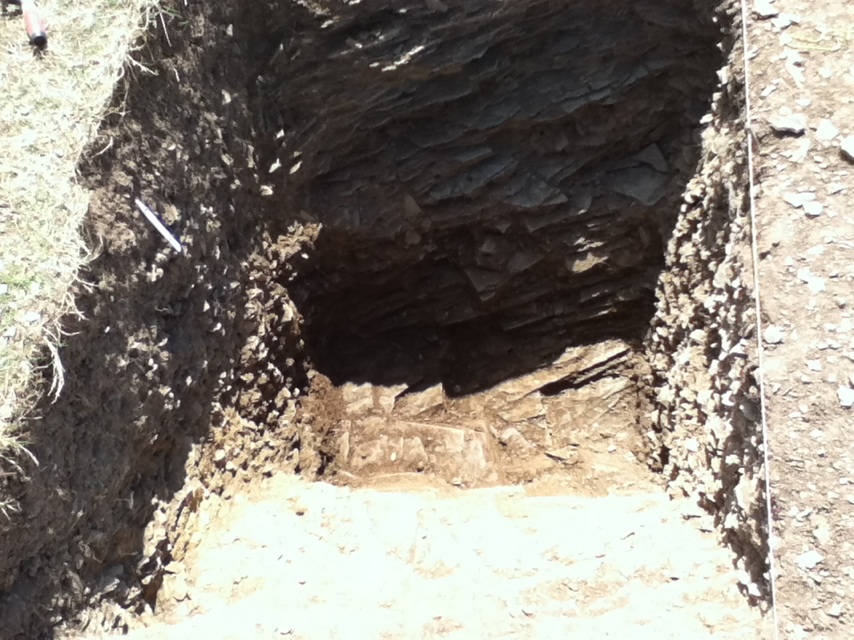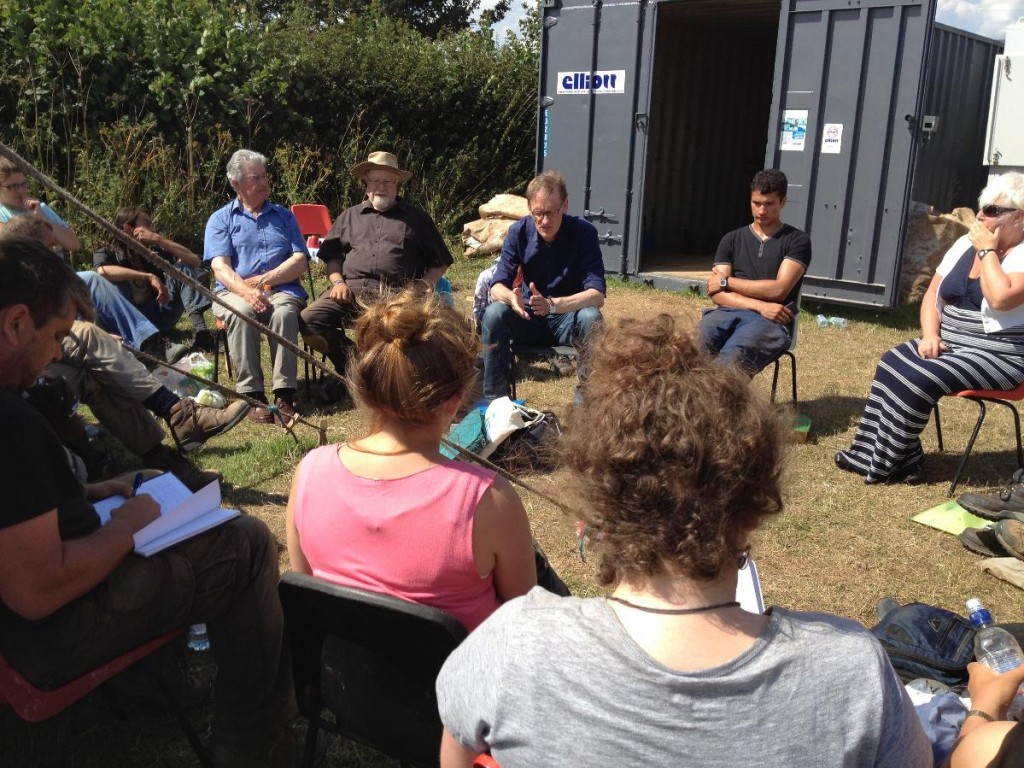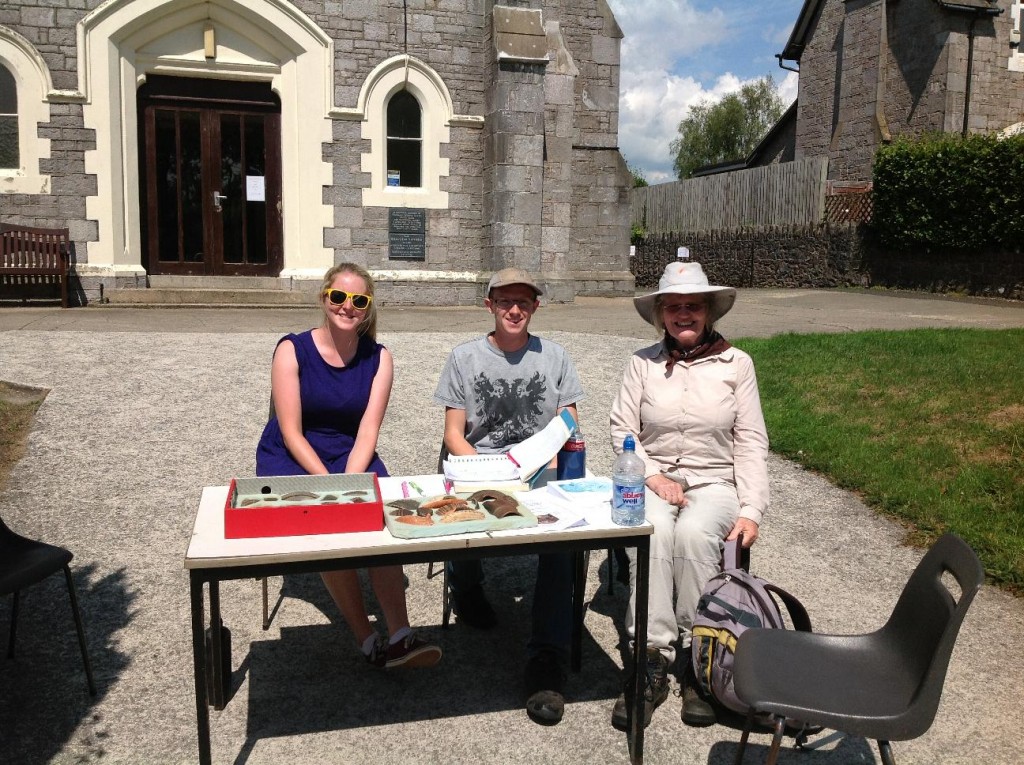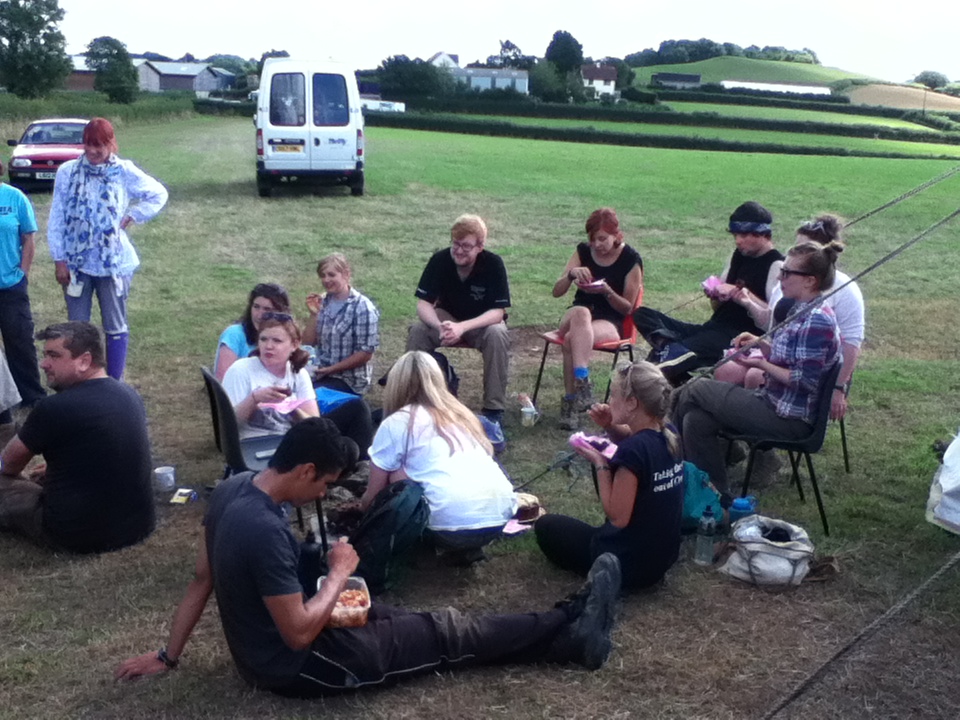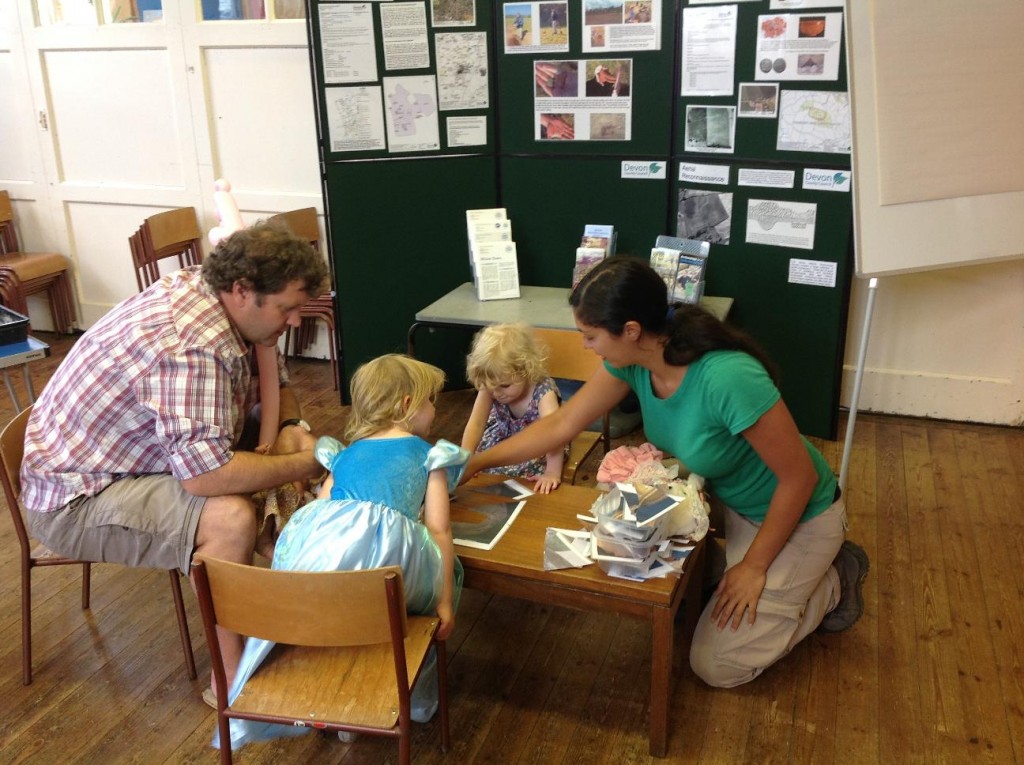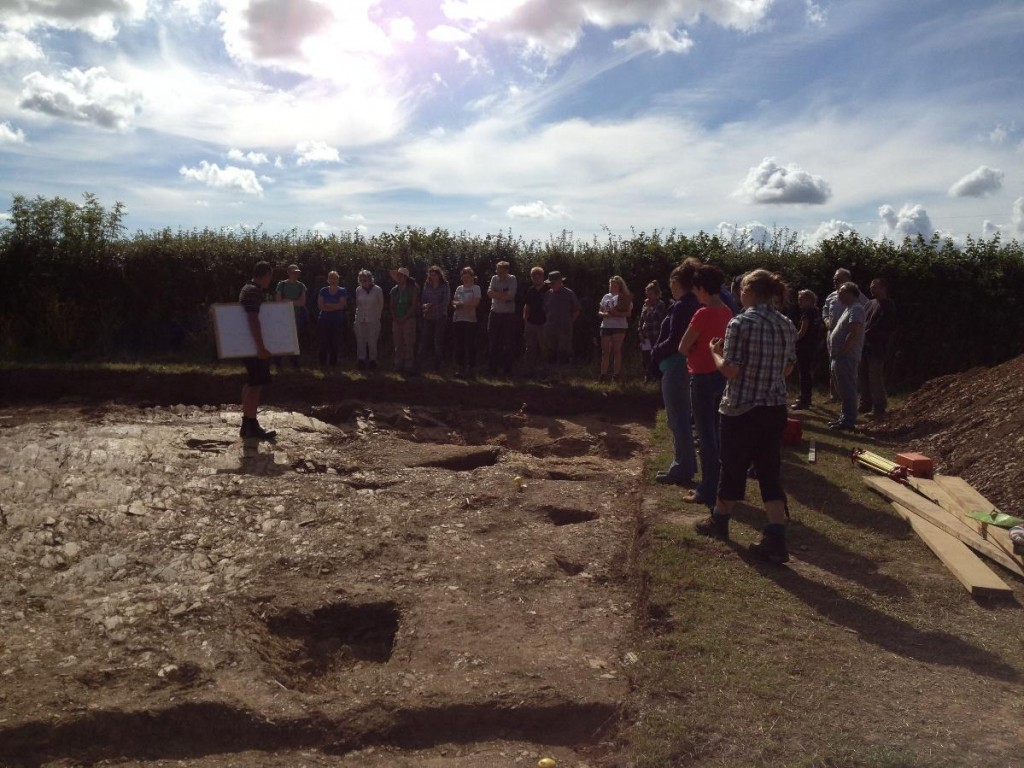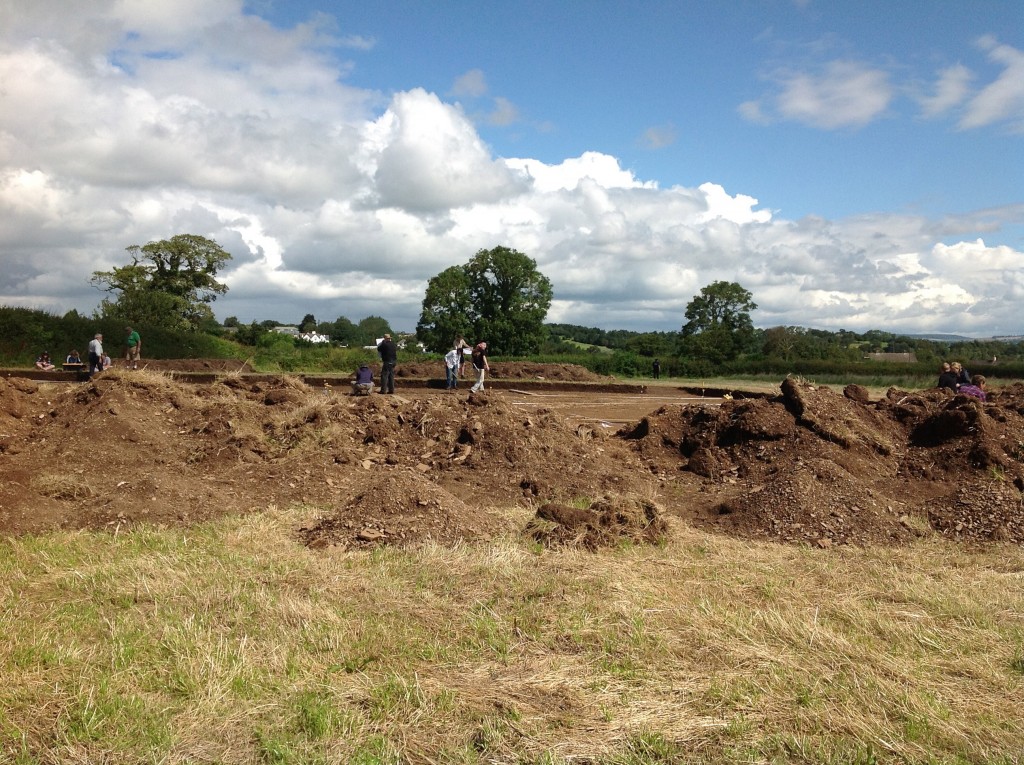This year’s excavation is taking place on the site that was partially explored last year. This morning the 25 m2 area was explained to students and volunteers by Marc, the Site Director.
This area is thought to have been the site of a small farmstead with surrounding field systems. The central circular feature is a large ring ditch, probably used as drainage for an Iron Age roundhouse located in the centre. Postholes within the ring ditch were thought to be structural features, but one of them contained part of a wooden post, giving these postholes a more modern date. No further structural features from the roundhouse have been found, and it is possible that they have been ploughed out.
At its southernmost point this large ring ditch branches out into two separate features of different depths, and probably also different ages. Slightly north of the large ring ditch a curving feature was uncovered, which with further investigation may turn out to be another, smaller ring ditch. At its eastern and western extremities the large ring ditch is cut by what appear to be pre of early medieval quarrying activities. Two large slots were excavated through the western one of these last year, and no further work is to be done on these features this season.
In the northern and southern portions of the 25 m2 area opened up there are a series of Middle Bronze Age pits, which were dated from pottery and flint finds, some of the flints have also been suggested to have a Neolithic date, providing the oldest date for the site so far.
An ‘L’ shaped feature in the south west corner of the site contained large amounts of Romano-British pottery suggesting a nearby settlement, however, there has been no archaeological evidence found on site to explain the large amount of coinage that a thorough metal detector survey of the site have turned up.
